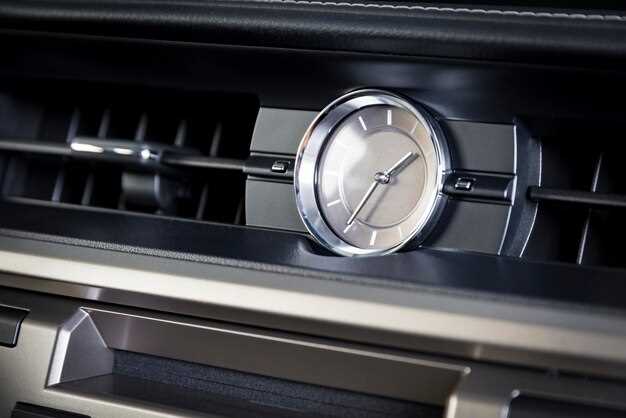
What is a fuel pressure regulator and why it matters
- Dominique Kaye
- 0
- Posted on

In the world of internal combustion engines, maintaining the correct fuel pressure is crucial for optimal performance and fuel efficiency. A fuel pressure regulator plays a vital role in managing this pressure, ensuring a consistent and adequate supply of fuel to the engine. As fuel flows from the tank to the engine, it must be kept at the correct pressure to avoid issues like poor engine performance, increased emissions, and even potential engine damage.
Fuel pressure regulators work by balancing the pressure of the fuel in the system against the demands of the engine. This responsibility is essential because too much or too little fuel pressure can lead to engine inefficiency and various mechanical issues. In essence, these components help to modulate fuel flow, allowing the engine to operate smoothly across different conditions and speeds.
Understanding the function and importance of fuel pressure regulators is vital for both vehicle owners and automotive professionals. Regular maintenance and inspection of these regulators can lead to improved engine performance and longevity, highlighting their significance in any fuel delivery system. Without them, the delicate balance required for effective combustion would be disrupted, leading to a chain reaction of performance-related problems.
How Fuel Pressure Regulators Function in Internal Combustion Engines

Fuel pressure regulators are essential components in internal combustion engines, ensuring that the fuel delivery system operates efficiently and effectively. Their primary function is to maintain a consistent fuel pressure within the fuel rail, allowing for optimal engine performance.
Fuel enters the regulator from the fuel pump and is directed toward the injectors. The regulator monitors the pressure in the fuel system and adjusts the flow of fuel accordingly. It uses a diaphragm and spring mechanism to achieve this balance. When fuel pressure exceeds a specific threshold, the diaphragm opens to allow excess fuel to return to the tank, thus regulating the pressure within the desired range.
Maintaining proper pressure is critical, as it directly impacts the fuel-air mixture entering the combustion chamber. A precise mixture is necessary for efficient combustion, optimal power output, and reduced emissions. If the pressure is too high, it can lead to fuel flooding, while too low pressure may cause lean conditions, resulting in engine hesitation or stalling.
In addition to pressure management, some regulators include a vacuum reference line. This feature allows the regulator to adjust fuel pressure based on engine load. Under conditions of high load, the vacuum decreases, prompting the regulator to raise fuel pressure to ensure sufficient fuel delivery. Conversely, under low load conditions, the pressure can be lowered, improving fuel efficiency.
In summary, fuel pressure regulators play a vital role in the functioning of internal combustion engines by maintaining consistent fuel pressure, which is crucial for reliable engine performance and efficiency. Their ability to adapt to varying engine conditions ensures that the fuel system operates within optimal parameters, contributing to overall engine health.
Diagnosing Common Issues with Fuel Pressure Regulators
Fuel pressure regulators play a critical role in maintaining optimal fuel delivery to the engine. When they malfunction, various issues can arise that affect vehicle performance. Understanding how to diagnose these problems is essential for effective vehicle maintenance.
One common symptom of a faulty regulator is inconsistent fuel pressure. If the pressure is too low, the engine may experience difficulty starting or may stall frequently. Conversely, if the pressure is too high, it can lead to fuel flooding, decreased fuel efficiency, and increased emissions. A fuel pressure gauge can be used to measure the system pressure and confirm whether it falls within the manufacturer’s specified range.
Visual inspections are also invaluable when diagnosing issues. Check for fuel leaks around the regulator. Leaks can indicate a failing seal or damaged unit. Additionally, inspect the vacuum line connected to the regulator. A ruptured or disconnected vacuum hose can cause pressure inconsistencies, leading to poor engine performance.
Another common issue involves the regulator’s diaphragm, which can become damaged over time. A defective diaphragm can result in excessive fuel pressure, ultimately causing the engine to run rich or misfire. To verify this, disconnect the vacuum line and check for fuel presence; any fuel in the vacuum line indicates a compromised diaphragm that needs replacement.
Electrical issues can also affect a fuel pressure regulator, particularly in electronically controlled systems. Testing the electrical connections and ensuring that they are clean and secure is crucial. A faulty sensor or wiring can lead to inaccurate pressure readings and erratic engine behavior.
Lastly, if the vehicle exhibits symptoms such as poor acceleration or fluctuating power while driving, it is essential to consider the role of the fuel pressure regulator in the overall fuel system. A malfunction can restrict fuel flow and adversely impact engine performance. Addressing these concerns promptly can prevent further damage and ensure the longevity of your engine.
Maintenance Tips for Optimal Fuel Pressure Regulation

To ensure the longevity and efficiency of your fuel pressure regulator, regular maintenance is crucial. Adhering to specific practices can help maintain optimal fuel pressure and prevent potential issues.
1. Regular Inspections: Periodically check the fuel pressure regulator for any signs of wear, leaks, or damage. Inspect the vacuum lines and connections to ensure they are secure and free of cracks.
2. Clean Fuel System: Contaminants in the fuel can affect pressure regulation. Regularly change the fuel filter and consider using fuel additives designed to clean the injectors and combustion chamber, promoting better fuel flow and pressure.
3. Monitor Fuel Pressure: Use a fuel pressure gauge to monitor the pressure in your system. This can help identify any fluctuations that may indicate a malfunctioning regulator. Make sure pressure readings are within the manufacturer’s specifications.
4. Replace When Necessary: If you notice signs of failure, such as poor engine performance, increased emissions, or hard starting, replacing the fuel pressure regulator may be necessary. A faulty regulator can lead to incorrect fuel mixture and engine damage.
5. Check Electrical Connections: Examine the electrical connectors and sensors associated with the fuel pressure regulator. Ensure they are clean, dry, and free from corrosion to maintain optimal operation.
6. Review Fuel Quality: Use high-quality fuel from reputable sources to minimize the risk of contamination and damage to the fuel system. Poor-quality fuel can lead to sediment buildup and affect the efficiency of fuel pressure regulation.
By implementing these maintenance tips, you can ensure your fuel pressure regulator functions optimally, enhancing overall engine performance and efficiency.
